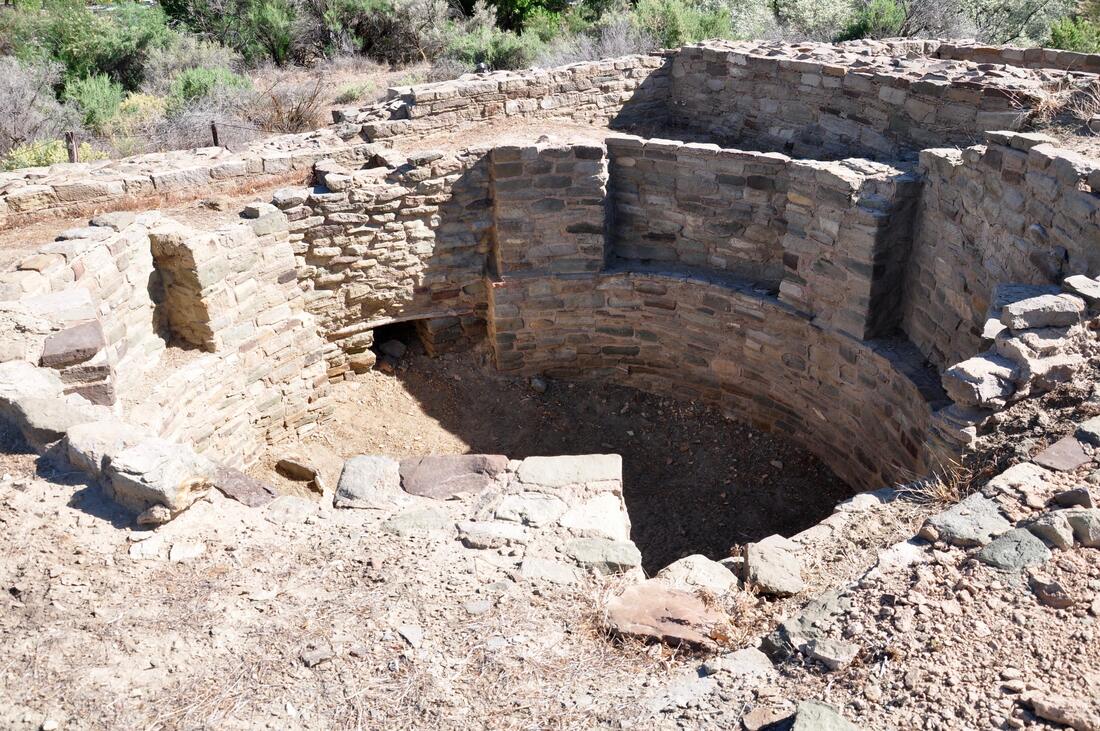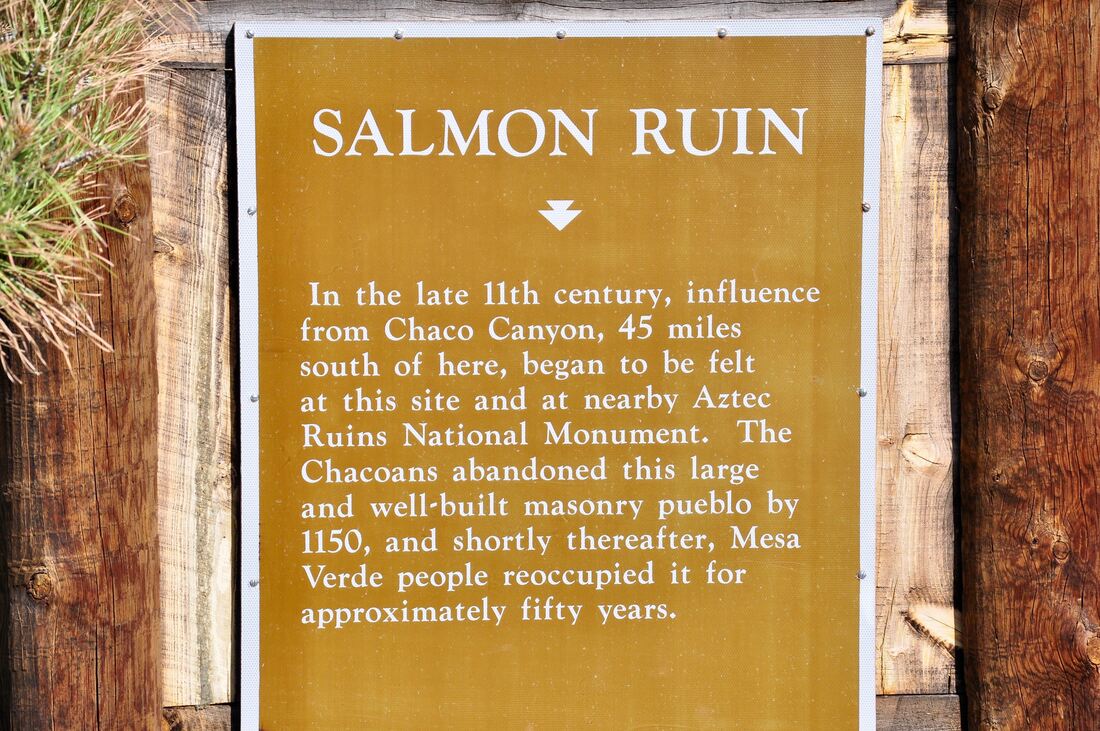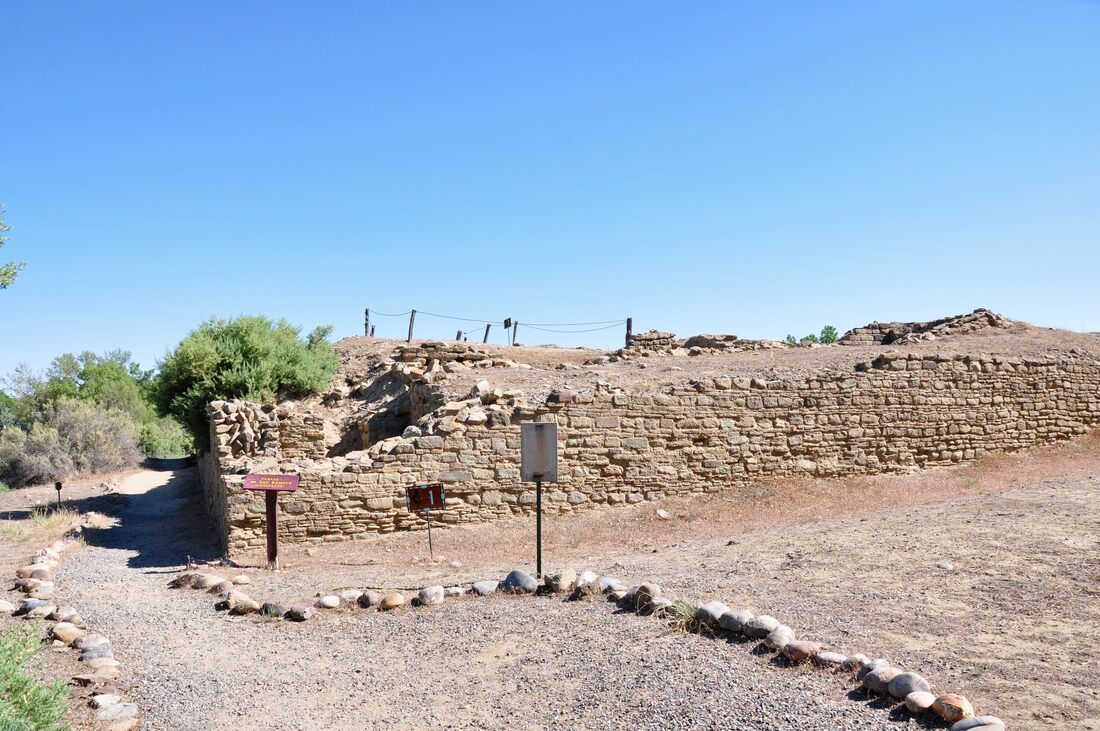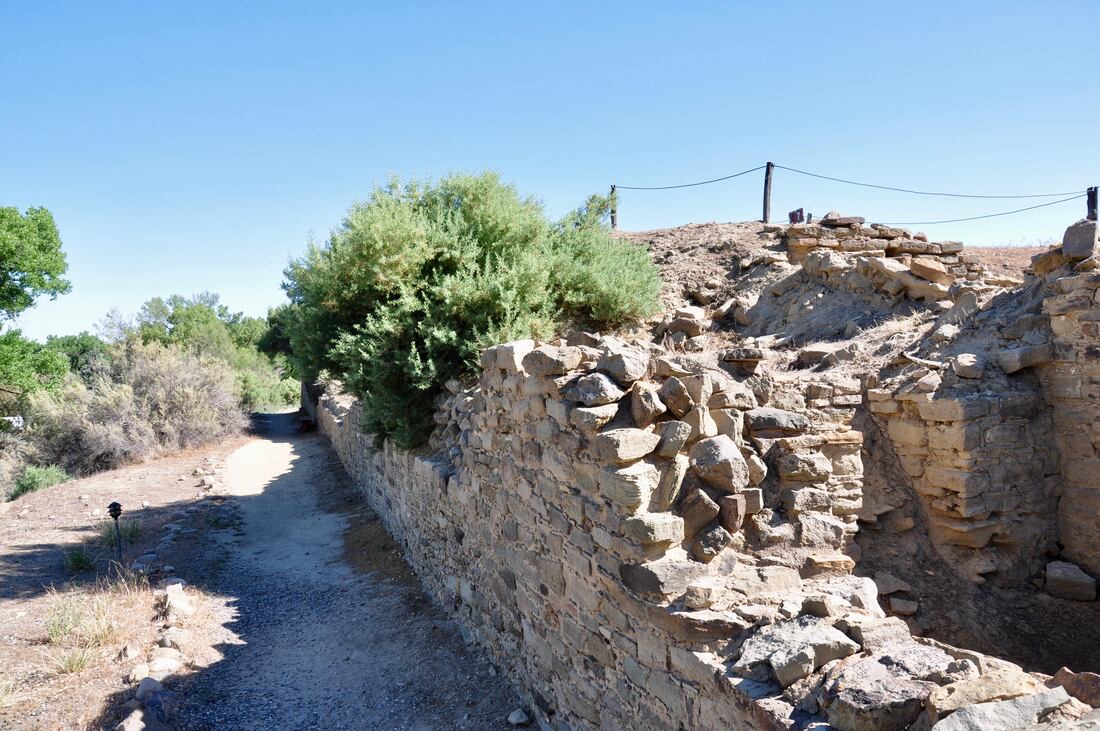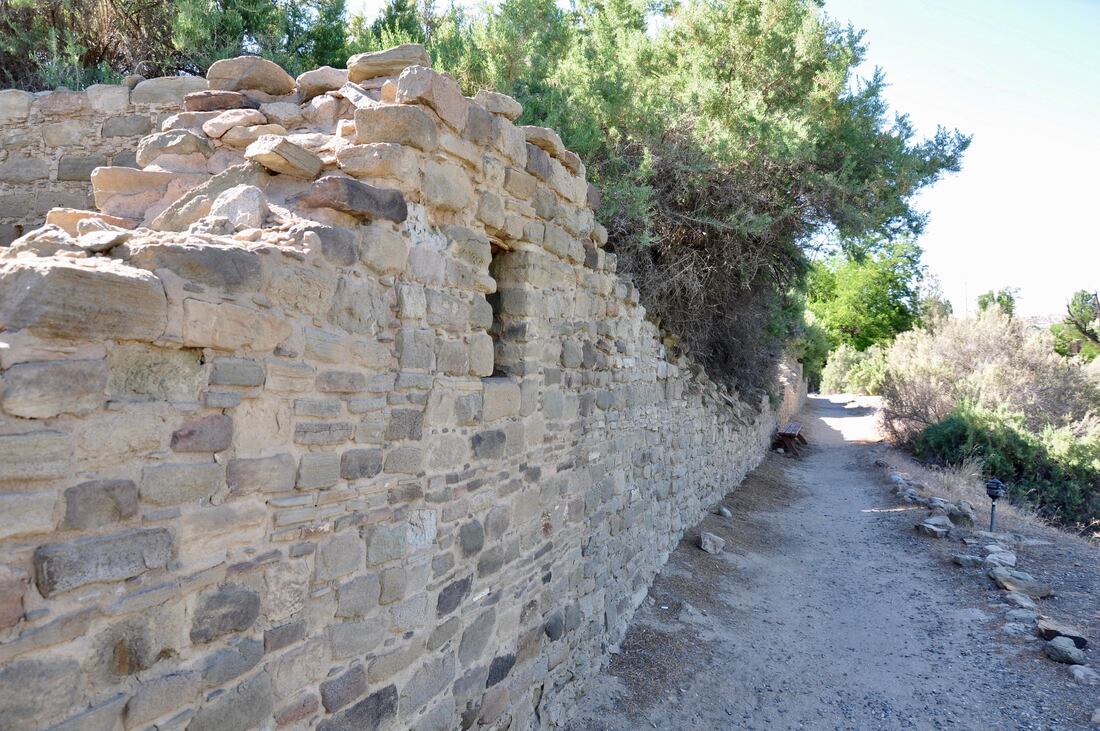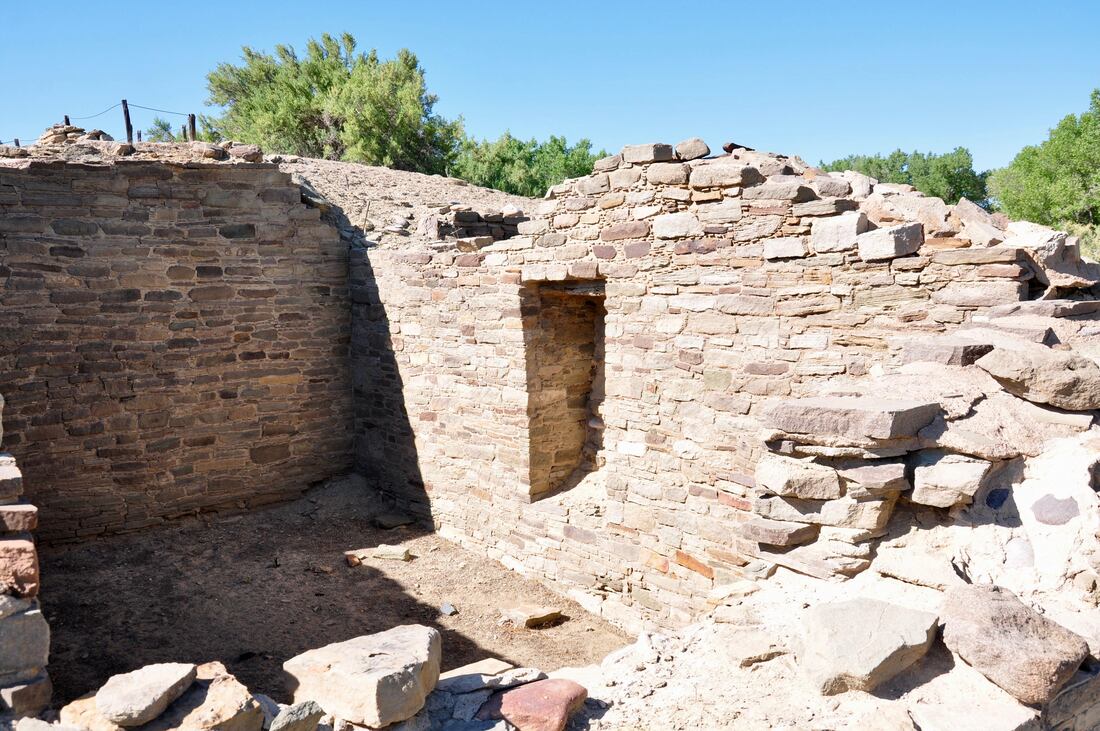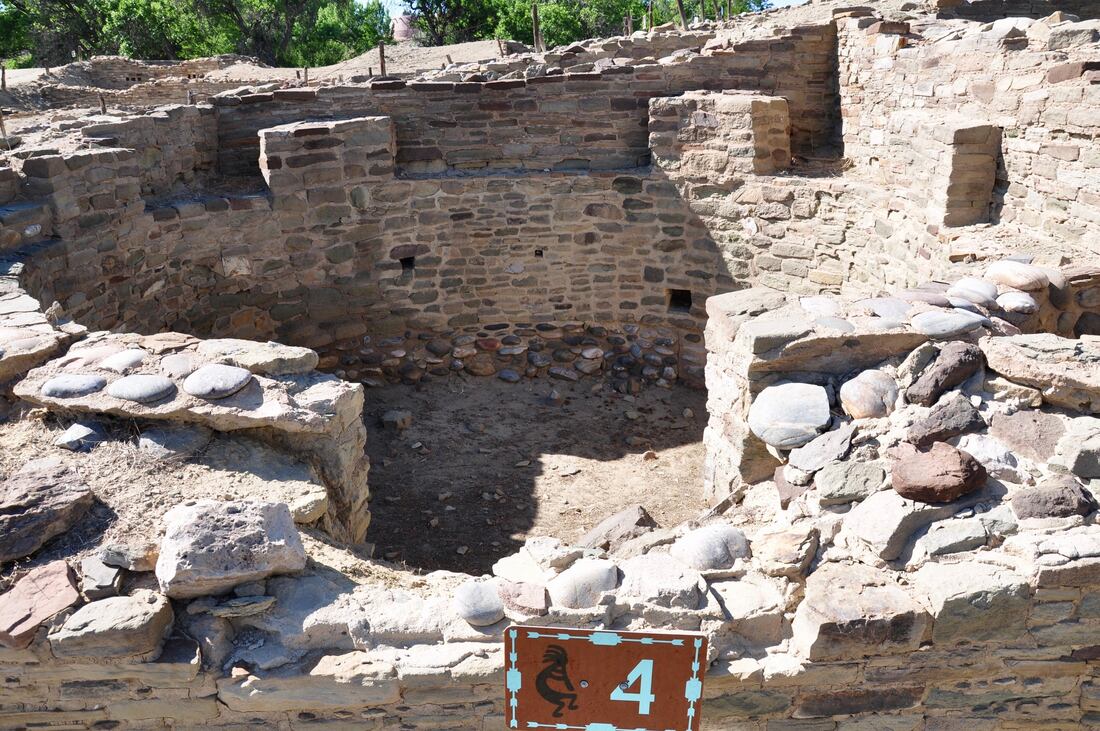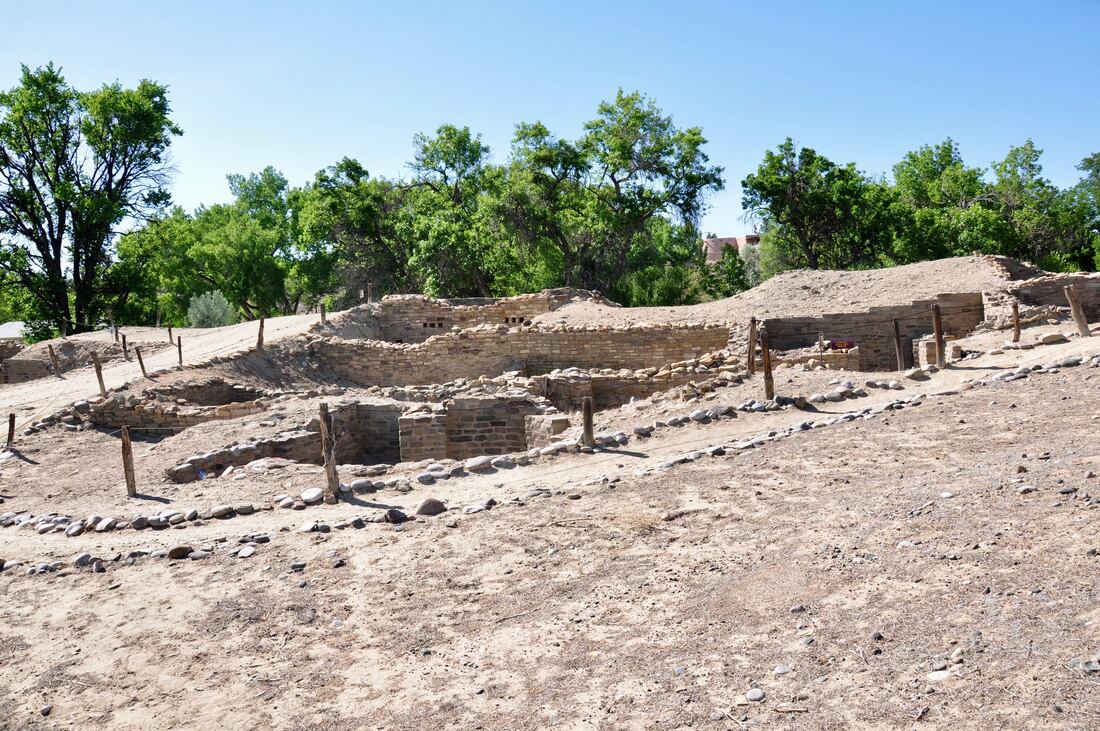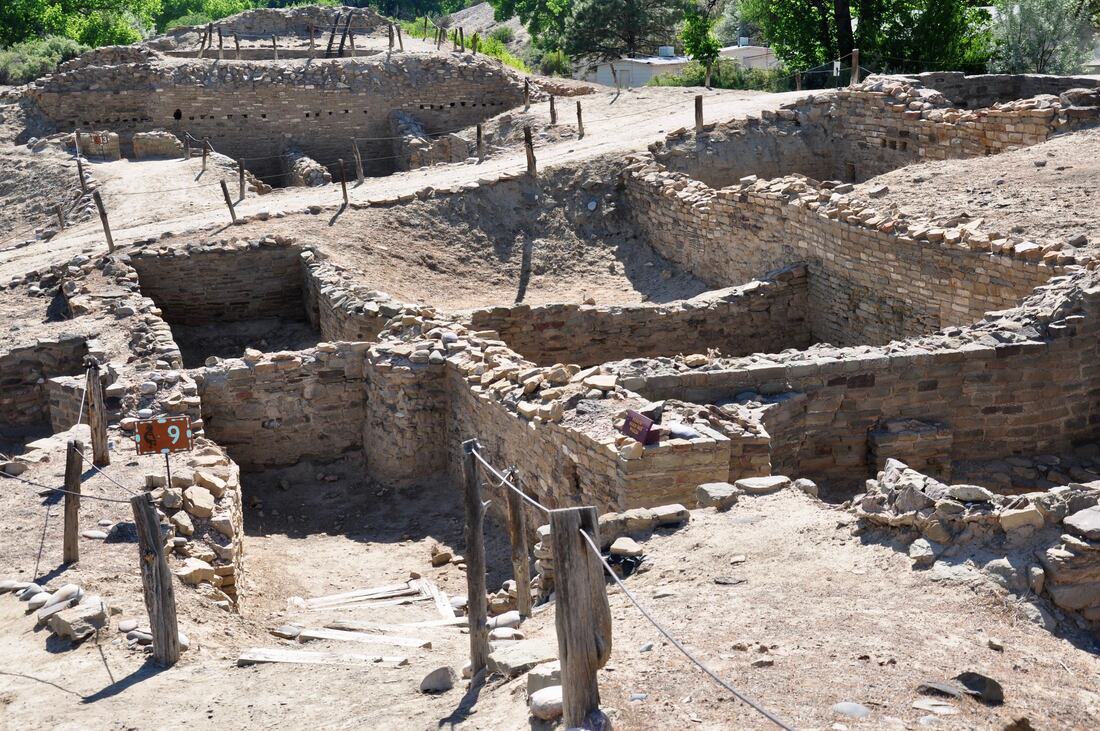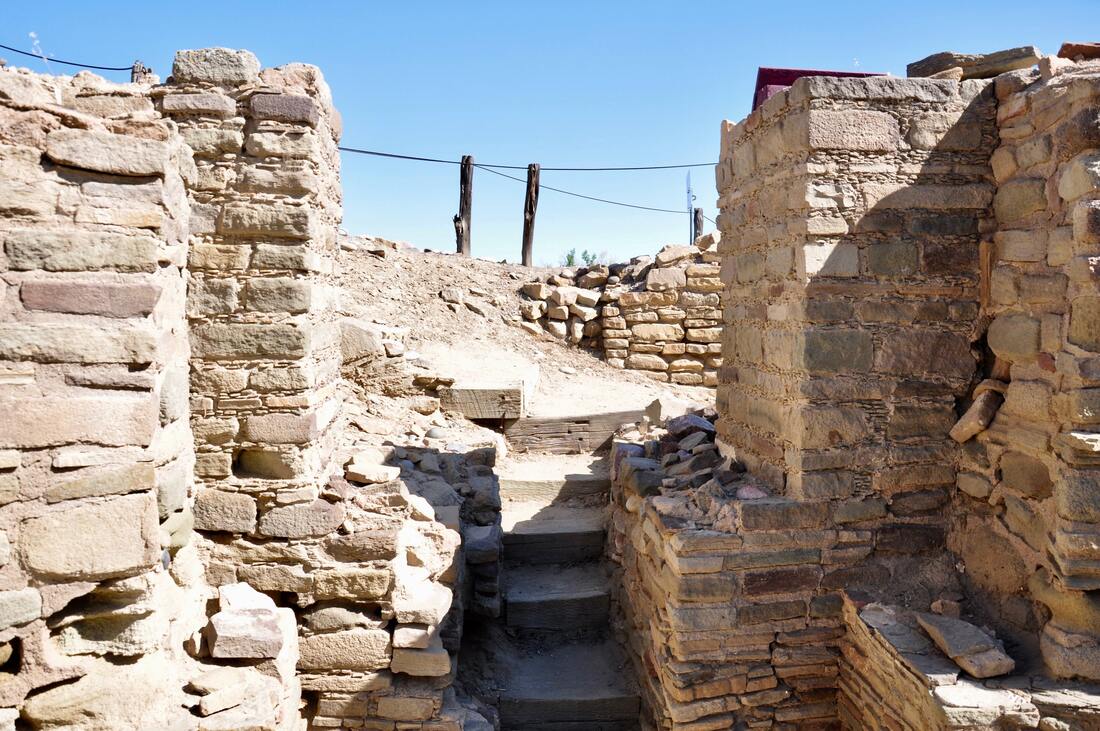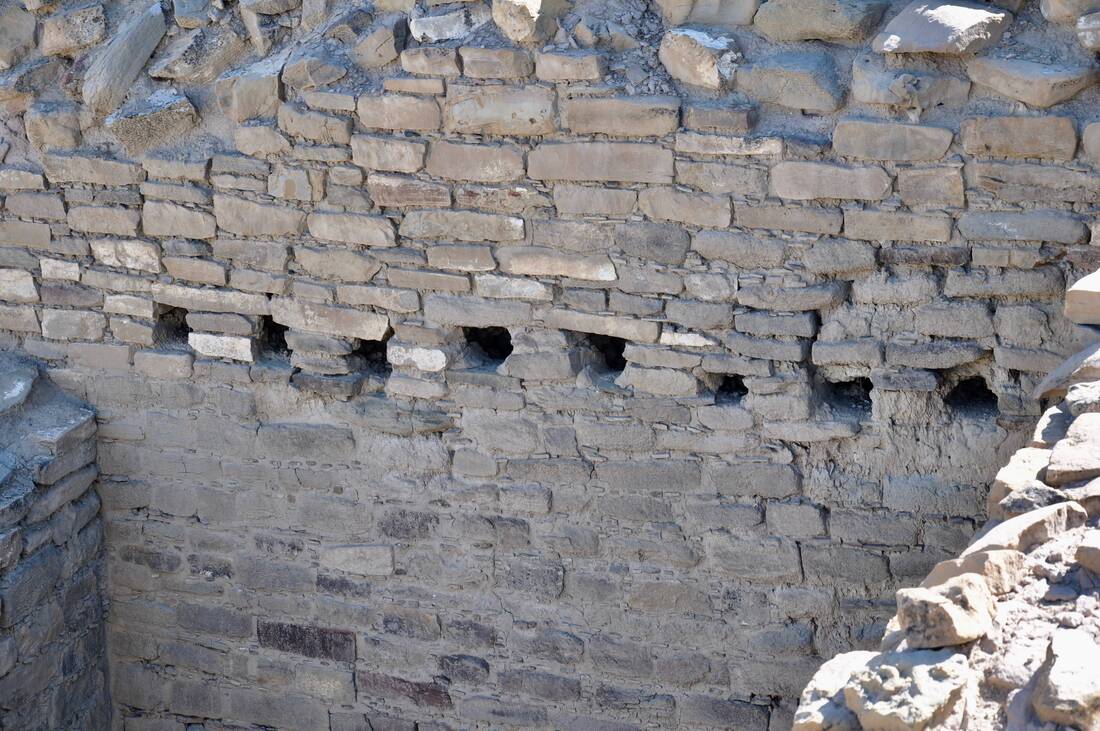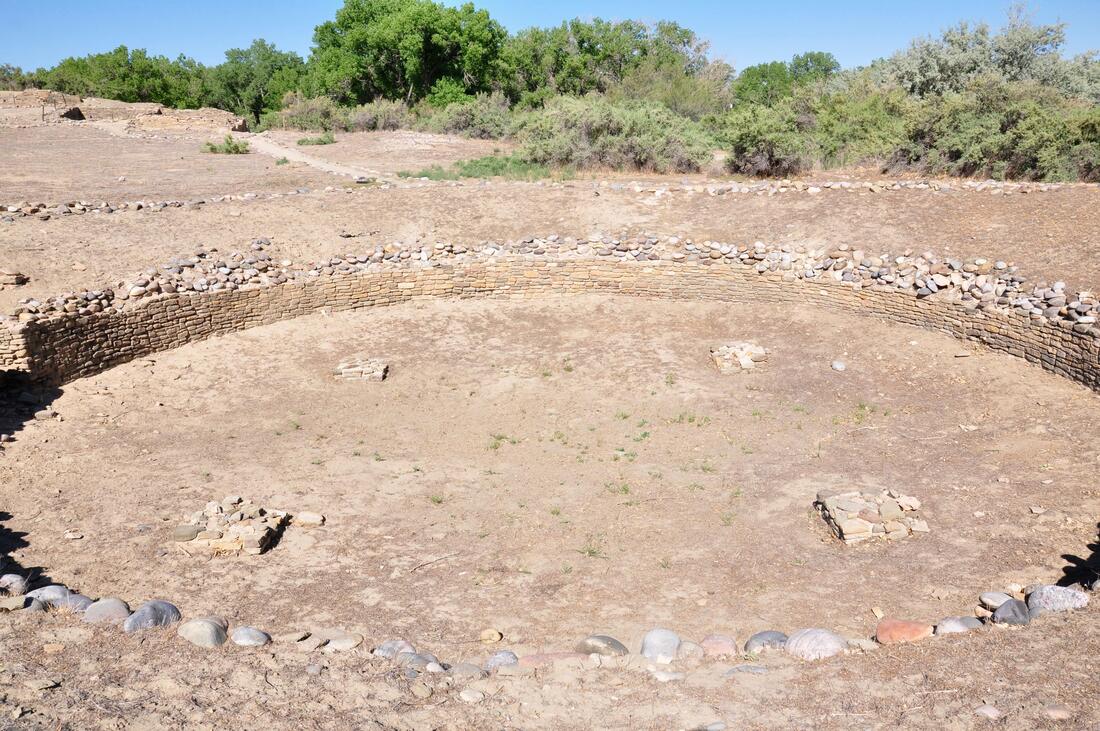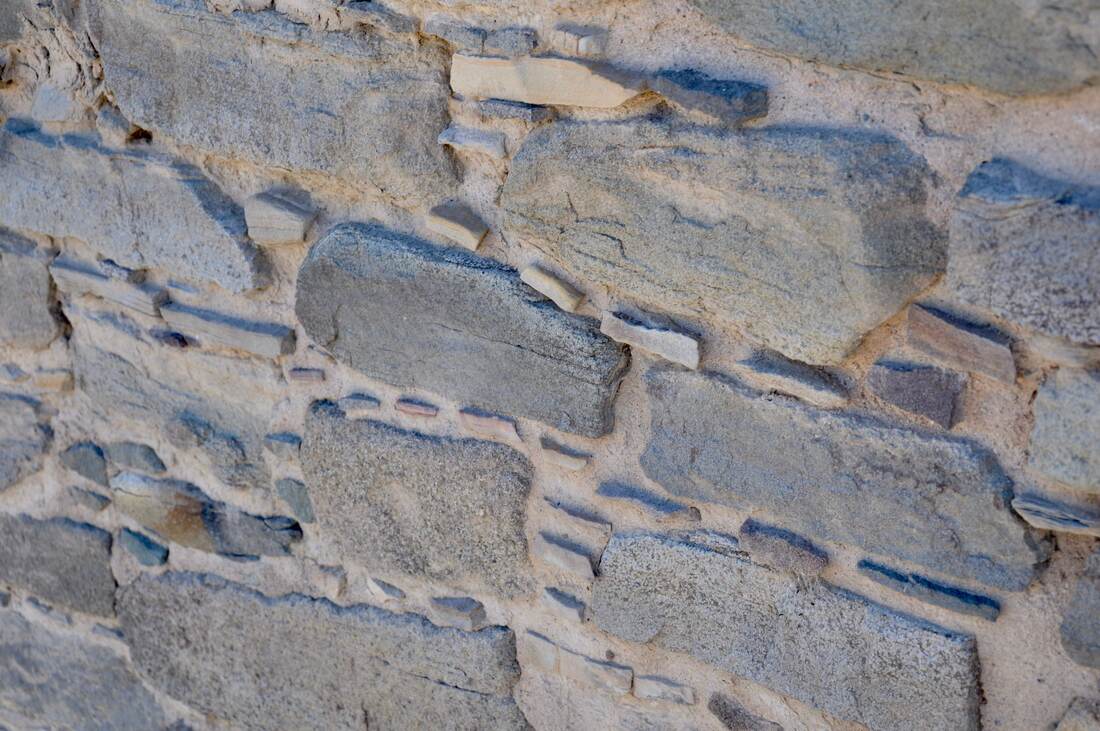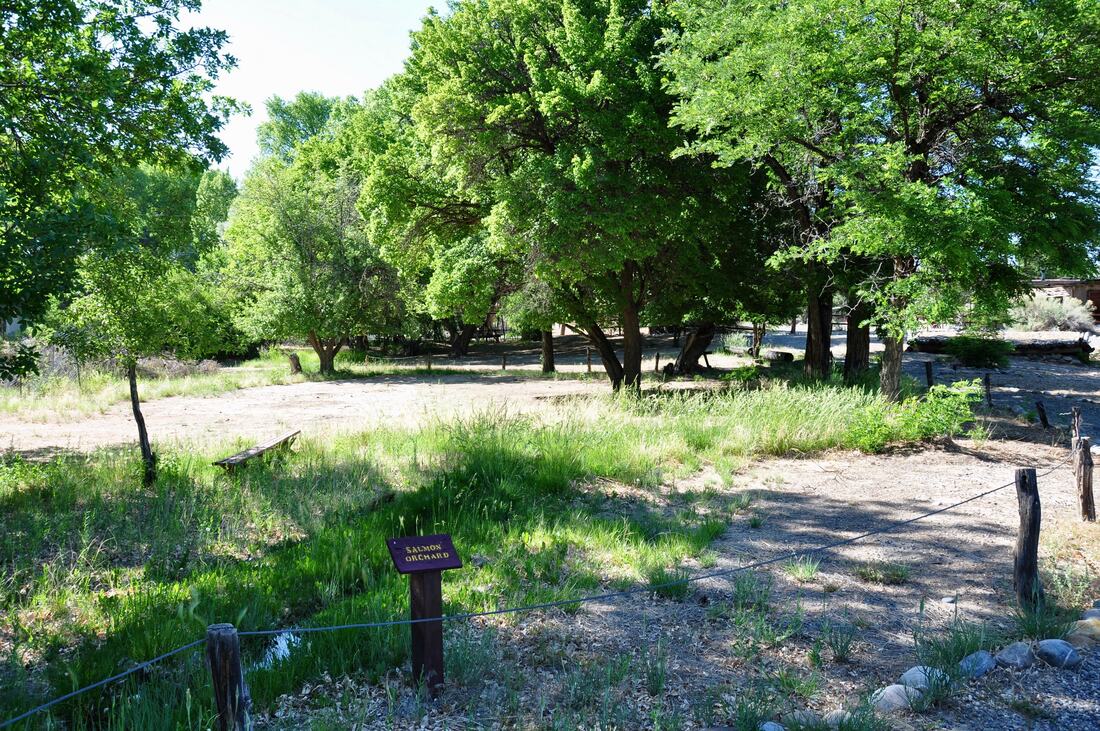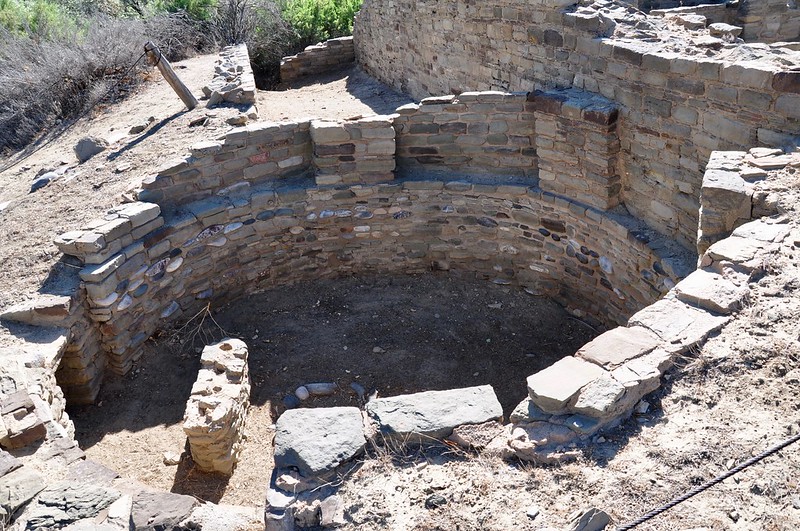|
Many people around the globe dream of visiting the ancient native heritage sites of New Mexico. There is something fascinating about learning about ancient cultures that captivates the soul and this is the inspiration for making the journey happen. A visit to an ancient heritage site can provide insight into the past and the experience can promote a better understanding of the natural harmonies of life itself. Many visitors transcend into a state of mind that divines the setting of the sacred places of the west as reality, while memories of the modern world begin to look like a blurry chaotic vision that will not last the test of time. When walking down the path to the Salmon Ruins, a long straight foundation wall is the first archaeological structure to be seen. The ruins are hidden behind this wall that is backed by earthen mounds that elevate the structures within. Once a visitor enters the ruins at the end of the long wall, the ancient pueblo complex is revealed and it truly is a majestic sight to see! The Salmon Ruins are a small to medium size pueblo complex, when compared to the massive great house pueblos that can be found in Mesa Verde or Chaco Canyon. Even so, the Salmon Ruins display the same architectural elements that are found in the larger ancient pueblo sites. Similar styles of masonry and chinking techniques are shared by both the Salmon and Chaco structures and there is evidence of Mesa Verde influence as well. As can be gathered, there once was quite an extensive network of communication and trade between the ancient pueblos in this region. For those who are new to the world of Native American culture, viewing a small pueblo complex like the one at Salmon Ruins will make the purpose of the structure easier to understand. It will still take some research to figure out the purpose of the individual rooms, courts and kivas, because logical deduction does not always take existential elements into account. The purpose of the round rooms, square rooms, tall rectangular rooms and courtyard circles each have a purpose at the Salmon Ruins. The ceremonial kiva, food storage rooms, food preparation rooms, weaving rooms, pottery shops, artisan rooms and community event amphitheaters can all be identified by doing some research ahead of time. An even easier way to gain insight is to take a guided tour or refer to the Salmon Ruins brochure that is provided with the price of admission. Each of the ancient pueblo features are numbered, so the information can easily be referenced in the brochure. In this way, touring the Salmon Ruins truly is an educational experience! By touring an ancient native sacred place in person, a visitor can also visualize ancient foot traffic patterns within the pueblo complex and see the trails that lead to nearby ancient agricultural areas. Most of the ancient pueblos actually were agricultural centers and the Salmon Ruins is no exception. An item of importance to remember is that people did cover a lot of ground in one day way back when, so the branching arms of an ancient pueblo society’s agricultural practices may extend well over 50 miles into the surrounding landscape. Some of the foot paths are also ancient trade and communication routes, so it can take a bit of meditation to visualize just how advanced these ancient societies once were. Visiting the Salmon Ruins certainly is an educational experience that will provide memories to ponder over for a lifetime. After touring more of the ancient heritage sites in this region, the Salmon Ruins experience will help to envision the overall picture of the great Chaco Culture network. With so many ancient native sacred places to experience in New Mexico, a visitor will find a yearning to return several times throughout their lifetime. In this way, the land of enchantment is captivating like no place else and the Salmon Ruins is a good place to start the journey!
0 Comments
Your comment will be posted after it is approved.
Leave a Reply. |
Leave no trace!
New!
Destination West YouTube channel! https://www.youtube.com/@DestinationWestOrg *The Destination West website upgrading project is well underway. Unique YouTube slideshows are replacing the outdated Flickr photo galleries. The new videos feature modern graphics and alternative music instrumentals that enhance the viewing experience. Some articles are being condensed, while others are getting much needed edits. As everybody knows, the bulk of the original articles and photos were published on the fly during the Covid camping venture and there were limitations. Upgrading is the way to go and more articles will receive a makeover each week until this project is completed. After that, I will be able to gather new material. There is light at the end of the tunnel!
JD Lane Archives
July 2024
Donations help the Destinaton West project continue into the future!
Go Fund Me! This website uses marketing and tracking technologies. Opting out of this will opt you out of all cookies, except for those needed to run the website. Note that some products may not work as well without tracking cookies. Opt Out of Cookies |
